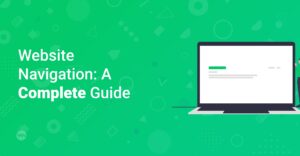Preface
Tired of making the same design tweaks across multiple pages on your Elementor website? Do you dream of a unified look and feel without the tedious repetition? If so, you’re in the right place! This guide will walk you through the power of Elementor’s Global Settings, showing you how to maintain consistency effortlessly across your entire site. Let’s dive in and unlock the secrets to a beautifully cohesive website!
Why Use Elementor Global Settings?
Imagine changing a button’s color and having it update automatically across your entire website. That’s the magic of Elementor Global Settings! Here’s why they’re a game-changer:
- Consistency: Ensure a unified brand identity by applying consistent styles across all your pages.
- Efficiency: Save time and effort by making changes in one place instead of repeating them on every page.
- Maintainability: Easily update your website’s design in the future without the hassle of manual adjustments.
- Professionalism: A consistent website looks more polished and professional, enhancing user experience.
Accessing Elementor Global Settings
Accessing the Elementor Global Settings is straightforward. Here’s how you do it:
- Open any Elementor Page: Start by opening any page or template with the Elementor editor.
- Click the Hamburger Menu: In the top-left corner of the Elementor editor, click the hamburger menu (three horizontal lines).
- Navigate to Site Settings: In the menu that appears, click on “Site Settings.”
Hint: You can access the Global Settings from any page you’re editing with Elementor.
Exploring the Global Settings Panel
Once you’re in the Site Settings, you’ll see a panel with various options. Let’s explore some of the key areas:
1. Global Colors
Global Colors allow you to define a set of colors that you can use throughout your website. This ensures that your color palette remains consistent.
- Primary Color: Often used for main headings, buttons, and accents.
- Secondary Color: Complements the primary color and is used for less prominent elements.
- Text Color: The color for your body text, ensuring readability.
- Accent Color: A color used for highlights, links, and other interactive elements.
To change a global color, simply click on the color swatch and choose a new color using the color picker. Any element using that global color will update automatically.
.elementor-button {
background-color: var(--e-global-color-primary); /* Example of using a global color in CSS */
}
2. Global Fonts
Just like colors, fonts play a crucial role in your website’s design. Global Fonts let you define font families, sizes, weights, and other properties that you can apply consistently.
- Primary Headline: The font for your main headings (H1, H2).
- Secondary Headline: The font for subheadings (H3, H4).
- Body Text: The font for your body text, ensuring readability and consistency.
- Accent Text: A font used for specific text elements that need to stand out.
Consider checking out these fantastic resources about fonts: How to choose the right fonts for your website and Top 10 Free Best Google Fonts for Your Website
Info: Choose fonts that are easy to read and align with your brand’s personality.
3. Typography
The Typography settings allow you to define default styles for your headings and body text. This includes font family, font size, font weight, line height, and letter spacing.
- Headings (H1-H6): Set default styles for all your headings, ensuring consistency in size and appearance.
- Body Text: Define the default font, size, and line height for your body text, making it easy to read and visually appealing.
4. Buttons
Buttons are an essential part of any website, and Elementor’s Global Settings let you customize their appearance in a consistent way.
- Typography: Set the font, size, and weight for your button text.
- Background Color: Choose a background color that aligns with your brand.
- Text Color: Set the color of the button text.
- Border: Customize the button’s border, including color, width, and radius.
- Shadow: Add a subtle shadow to make your buttons stand out.
5. Form Fields
If you use forms on your website, the Form Fields settings allow you to customize their appearance, ensuring they match your overall design.
- Typography: Set the font, size, and weight for the form field labels and input text.
- Background Color: Choose a background color for the form fields.
- Text Color: Set the color of the input text.
- Border: Customize the form field’s border, including color, width, and radius.
6. Image Settings
While not as extensive as other sections, Image Settings in Elementor Global Settings allow you to set some basic styles for images across your site. This can include things like border-radius and box-shadow, ensuring images have a consistent look.
7. Site Identity
This is where you can manage essential site-wide branding elements:
- Site Logo: Upload your logo and set display options.
- Site Title and Description: Define your site’s name and a short description, crucial for SEO.
- Favicon: Upload a favicon (the small icon that appears in browser tabs) to reinforce your brand identity. Check out this helpful guide about favicons: 2 Easy Ways on How to Add a Favicon to Your WordPress Website.
Info: A favicon that is well designed enhances your brand identity!
8. Background
Control the overall site background with consistent color schemes:
- Background Type: Select a solid color, gradient, or image.
- Color/Image: Choose or upload your desired background.
9. Layout
Define default content widths and section spacing:
- Content Width: Set the standard width for your content areas.
- Section/Column Gap: Adjust the spacing between sections and columns, ensuring a clean layout.
Applying Global Settings
Once you’ve customized your Global Settings, it’s time to apply them to your website. Here’s how:
- Edit an Element: Open any page or template with the Elementor editor and select the element you want to style.
- Choose Global Style: In the element’s settings, look for the style options (e.g., color, font, border). Instead of choosing a specific value, select the “Global” option.
- Select a Global Setting: Choose the Global Color, Font, or other setting you want to apply.
Hint: When you edit a global setting, all elements using that setting will update automatically.
Best Practices for Using Global Settings
To make the most of Elementor Global Settings, follow these best practices:
- Plan Your Design: Before you start building your website, plan your design and choose your colors, fonts, and styles. This will make it easier to set up your Global Settings.
- Use a Style Guide: Create a style guide that documents your website’s design elements, including colors, fonts, and button styles. This will help you maintain consistency across your website.
- Test Your Settings: After you’ve applied your Global Settings, test them on different pages and devices to ensure they look good everywhere.
- Regularly Review Your Settings: As your website evolves, regularly review your Global Settings to ensure they still align with your brand and design goals.
Troubleshooting Common Issues
Even with Global Settings, you might encounter some issues. Here are a few common problems and how to solve them:
- Changes Not Reflecting: If your changes aren’t reflecting, try clearing your browser cache and Elementor’s cache (Elementor > Tools > Regenerate CSS & Data).
- Global Settings Overridden: Sometimes, specific element styles can override Global Settings. Make sure you haven’t accidentally set a custom style that’s conflicting with your Global Settings.
- Conflicting Themes or Plugins: In rare cases, themes or plugins can conflict with Elementor’s Global Settings. Try deactivating plugins one by one to see if that resolves the issue.
Hint: Always clear your cache after making changes to your Global Settings.
Taking it Further: Dynamic Content and Custom CSS
Once you’ve mastered Global Settings, consider exploring dynamic content and custom CSS for even greater control over your website’s design.
- Dynamic Content: Use Elementor’s dynamic content feature to pull data from your WordPress database and display it on your website. This is useful for creating dynamic templates and layouts.
- Custom CSS: If you need more control over your website’s design, you can use custom CSS to add unique styles and customizations. Use CSS to add a custom sticky header using code: Free Sticky Header for Astra Starter Templates with CSS Only.
Conclusion
Elementor Global Settings are a powerful tool for maintaining consistency and efficiency in your website design. By following the tips and best practices in this guide, you can create a beautifully cohesive website that reflects your brand and engages your audience. So, go ahead and unlock the full potential of Elementor and start building the website of your dreams! Remember to come back to STARTMAKINGWEBSITES for more resources on how to build websites with ease!
We have a ton of guides that might interest you on our site about Elementor so feel free to continue reading such as 10 Expert Tips and Tricks for Mastering Elementor Page Builder and Getting Started with Elementor: The Complete Guide.



